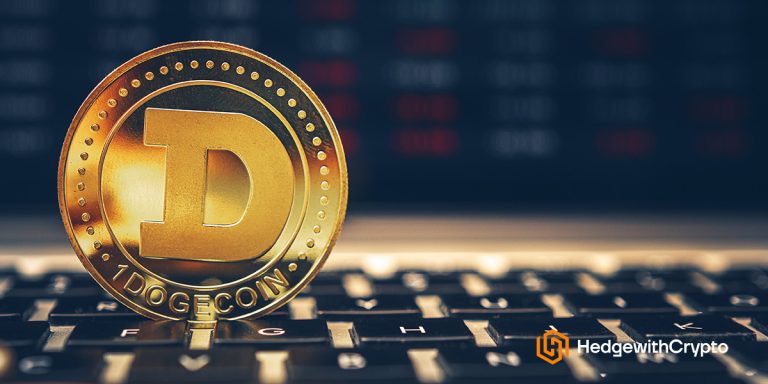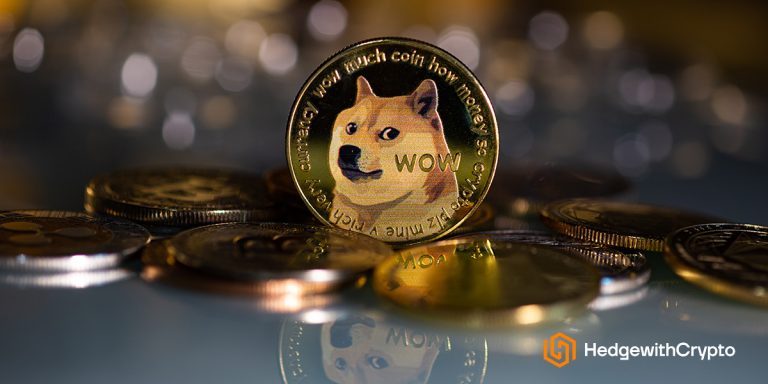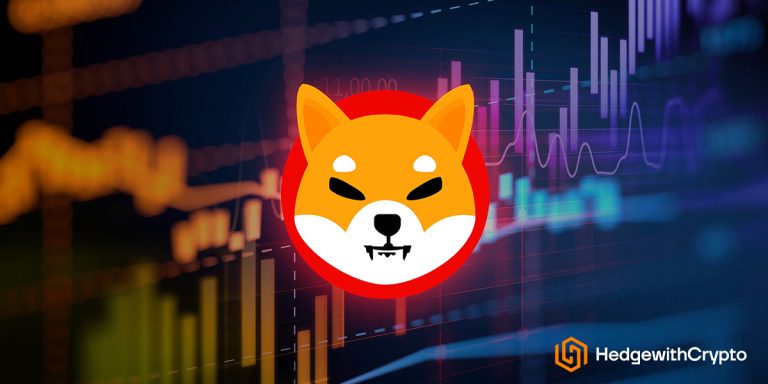Dogecoin Is NOT Dead: But It Can Fail For Several Reasons
Dogecoin is one of the crypto industry’s most popular coins, however, it has underperformed relative to other meme coins. That said, Dogecoin’s developers are still active and the coin still plays an important role in the blockchain ecosystem.
Key Takeaways:
- The first meme coin to gain widespread popularity, Dogecoin (DOGE), is backed by many celebrities such as Elon Musk.
- Dogecoin is certainly not dead and has a strong community that is continually developing.
- A top 10 cryptocurrency by market capitalization since February 2021.
- Dogecoin's market value ($8.9B) is double that of Shiba Inu, the next competitor meme coin ($4.3B).
TABLE OF CONTENTS
Dogecoin has long been the crypto industry’s most popular meme coin – in terms of social status, market cap, and active community. However, since the cryptocurrency’s meteoric rise in 2021, the price of DOGE has steadily declined. The original battle cry of Dogecoin enthusiasts, “DOGE $1 dollar”, now seems a long way away. However, does this mean that Dogecoin is dead? This guide will explore the history of Dogecoin, its current development status, and analyze its potential price movements in the future.
Is Dogecoin Dead?
While the list of dead coins continues to grow, Dogecoin’s impact extends far beyond its price performance as the first major meme coin. First-to-market products tend to outperform newcomers, even as the competition from other meme coins continues to get more complex. Therefore, Dogecoin will likely be remembered fondly for as long as the crypto sector survives.
Moreover, from February 2021 to the time of writing, Dogecoin has stayed within the highest ten cryptocurrency projects by market capitalization. Therefore, Dogecoin is unlikely to completely die as long as there is a strong community presence backed by celebrities such as Elon Musk who owns Dogecoin and will not sell it.
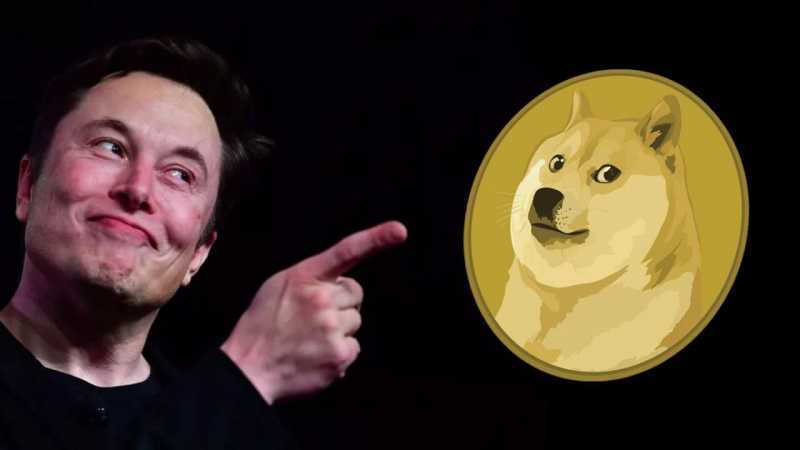
Dogecoin is a legacy cryptocurrency, almost as synonymous with the industry as Bitcoin and Ethereum. In spite of the coin’s poor performance since 2021, Dogecoin has consistently maintained its place in the top 10-15 assets by market cap. Even as a digital currency that isn’t always endearing to institutional traders, Dogecoin still regularly sees 24h trading volume of 200+ million.
Beyond this, Dogecoin is far from the only cryptocurrency to have struggled through the crypto winter of 2022-3. Very few assets have performed well – even BTC dropped more than 50% from its peak in 2021. How DOGE’s value moves with the next crypto bull run will give investors a better picture of its long-term potential.
How Dogecoin Could Fail
While Dogecoin is unlikely to fail and join the list of dead coins, several factors could impact its survivability and decrease community support and associated market capitalization. These include strong competition with better token metrics for price appreciation, a lack of development, and reduced media attention from crypto influencers and celebrities.
1. Dogecoin is built on speculation and hype
Dogecoin is a meme coin that has little utility by nature. Its designation as a low-value tipping alternative for message boards has been usurped by native platform currencies like Reddit Gold. In general, Dogecoin’s primary use case is largely ignored. Therefore, the value of an asset like DOGE is almost entirely driven by speculation and sentiment.
Coins with similar characteristics can struggle substantially during bear markets like the one cryptocurrency (and other traditional markets) experienced between 2022 and 23. As hype is muted, institutional investors tend to move away from speculative assets and into safer, defensive ones like Bitcoin, bonds, or cash.
2. Competitors
Meme coins tend to operate more like “fads” than other assets given their limited utility. One coin will be hyped for a while, then fade into the sunset, only to be overtaken by the next popular internet meme. This has no doubt affected Dogecoin’s popularity since the events of 2021.
Take Shiba Inu, for example. This coin is a direct competitor to Dogecoin, even referencing the exact same internet meme. However, SHIBA is built on the more popular Ethereum blockchain, giving the cryptocurrency far greater potential for utility. Shiba Inu can be used in DeFi as a yielding asset and even has its own decentralized exchange, ShibaSwap. However, Dogecoin remains twice the size of Shiba Inu in terms of market cap at the time of writing.
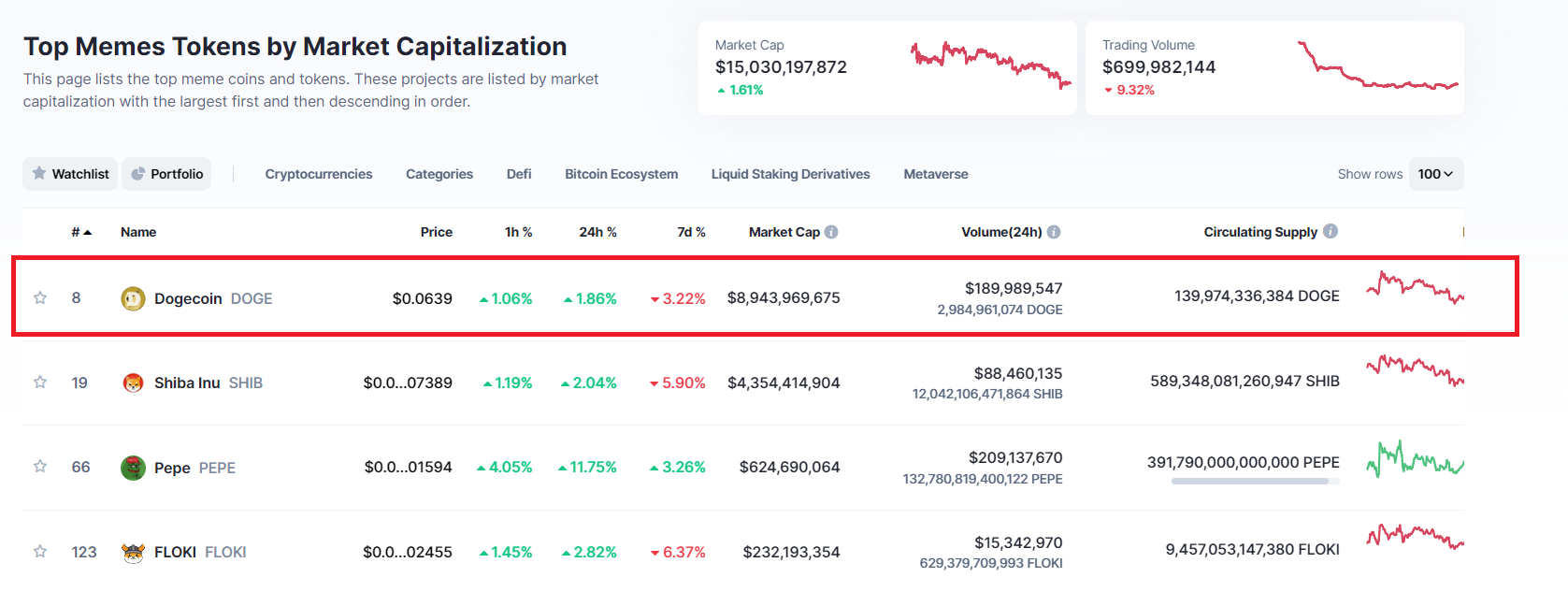
Additionally, newer meme coins like Pepe the Frog (PEPE) and Dogelon Mars may not have any long-term staying power in the industry. Still, their short-term rises directly take investment away from Dogecoin. Given the overnight success of many of these meme coins (often rising hundreds of percent in 24 hours, only to lose it all within 48), hundreds continue to pop up daily.
3. Tokenomics
Dogecoin has an unlimited maximum supply. Whereas an asset like Bitcoin has an inherent value due to its scarcity, Dogecoin is naturally inflationary. Inflationary assets aren’t excluded from becoming valuable but are generally designed to maintain a low price point. This tokenomics decision is actually a countermeasure against Bitcoin's huge price rises, which prevented it from being a viable mode of exchange. While the value of each DOGE remains low, it can fulfill its role as a way to tip people small amounts.
4. Lack of development
Dogecoin’s original developers, Palmer and Markus, removed themselves from the Dogecoin community years ago. Due to this, and other reasons, Dogecoin hasn’t seen a huge spate of updates in its history – with only 2 code upgrades occurring between 2019 and 2021.
However, since 2023 the developers – headed by the Dogecoin Foundation – have become far more active. These updates aren’t directly related to the Dogecoin cryptocurrency. Rather, they are aimed at helping developers who wish to implement DOGE into their platforms. This could go a long way to helping improve Dogecoin’s long-term utility and function within the ever-evolving industry.
The History Of Dogecoin
Dogecoin is one of the oldest and most-storied cryptocurrencies. The meme coin was developed in late 2013 by Billy Markus and Jackson Palmer, intended as a satirical take on the overly complex coins that dominated the sector (such as Bitcoin and Litecoin). Dogecoin is based on the popular Shiba Inu internet meme circling message boards through the early 2010s.
The cryptocurrency was built on a Proof-of-Work consensus mechanism, using Litecoin’s source code and making some minor adjustments. Unlike its alternatives, given its high supply and low value, users with average computers could easily participate in mining the coins. Every successful block mined by participants would net them 10,000 DOGE out of the remaining number of Dogecoins to be mined.
The economic principles of Dogecoin were intended to keep the asset’s price relatively low so it could be used to give “micro-tips” to other internet users on forums and sites like Reddit. This foundation led to a tight-knit community that attracted attention from celebrities like Elon Musk and Snoop Dogg.
